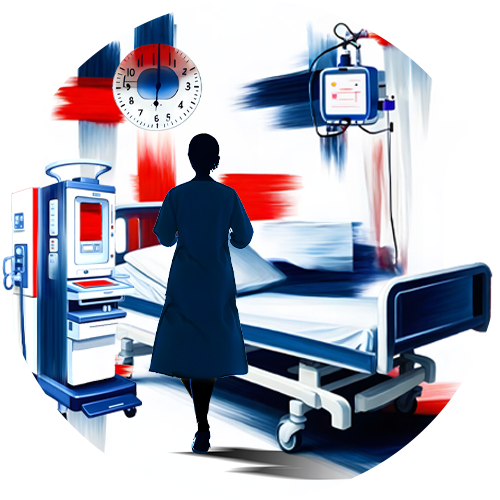On Call — Chapter 15: Coffee Stains
| July 16, 2024It’s a part of life in the ER, dealing with those who are mentally challenged, often beyond repair

T
he sound of the fire alarm cutting through the hum of hospital life is shattering.
Even more shattering? When security hauls the culprit back into the ER, his wrists bound in restraints, and I recognize the slight teenager as my patient.
He’d watched me suspiciously as I entered the room. I noted the pale, clammy skin, the lank, unwashed hair.
“What are your symptoms?” I asked.
“Well,” he said slowly, stretching each syllable like two kids fighting over the same taffy, “my head is hurting. And my leg.” He points. “You know, I was walking to the store yesterday, when I saw someone who was holding an apple by the place, you know, where they put the fruits.” He stops. Frowns. “But carrots are better. They have this shape, I can’t explain it. Orange is a nice color.”
I watched his eyes twitching, the way he jerked his arms, and I knew.
“Come to the hallway,” I said firmly, cutting off his eloquent exposition on the color orange. “Here’s a bed. Sit. It’s very comfortable.” He sat, thankfully with no resistance.
The boy was discoursing knowledgeably about the color green when I turned to my next patient, a woman with a painful burn on her arm.
When patients exhibit signs of severe mental illness, we place them in the hallway so we can keep a close eye on them. It’s a part of life in the ER, dealing with those who are mentally challenged, often beyond repair. This isn’t the place for simple cases, or people who manage their psychiatric care properly. The ER is a temporary Band-Aid for the most underserved population in the city, where we care for patients to the best of our ability before sending them back to the streets, the subway stations, and the housing projects on the South Side. None of these people are taking the medication they should or receiving help from mental health specialists. They’re often addicts with no support network, who can’t hold down jobs, and don’t look cared for. In this world, unfortunately, it’s not a phenomenon.
Oops! We could not locate your form.


